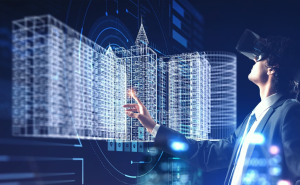Virtual Reality (VR) and Augmented Reality (AR): Transforming Tomorrow’s Reality
In a world driven by innovation and technological advancement, Virtual Reality (VR) and Augmented Reality (AR) have emerged as two of the most transformative trends. These technologies are not just changing the way we perceive reality; they’re revolutionizing industries and shaping the future.
The Power of Virtual Reality (VR)
VR offers users the opportunity to immerse themselves in entirely new digital environments. Whether it’s for gaming, education, or even healthcare, the applications of VR are vast. With VR headsets becoming more accessible, users can explore 3D worlds, engage in realistic simulations, and redefine their entertainment experiences.
becoming more accessible, users can explore 3D worlds, engage in realistic simulations, and redefine their entertainment experiences.
Augmented Reality (AR) – Bridging Digital and Physical
AR blends the digital and physical worlds. Through smartphones or AR glasses, users can experience real-world enhancements. From interactive advertising to navigation apps, AR’s potential is limitless. Moreover, industries like retail are utilizing AR to enable customers to “try before they buy” in virtual dressing rooms.
Transforming Education and Training
Both VR and AR are making waves in education and training. VR creates immersive learning environments, transporting students to historical events, foreign countries, or even microscopic worlds. AR offers real-time information overlays, enhancing understanding. Medical professionals, for instance, can practice surgeries with AR guidance.
Gaming Revolution
The gaming industry is at the forefront of VR and AR adoption. VR gaming immerses players into captivating experiences, while AR mobile games like Pokémon GO showcase the potential for real-world integration. The gaming industry continues to push the boundaries of what’s possible.
Industrial and Healthcare Applications
VR and AR are changing the industrial landscape with applications in design, remote collaboration, and virtual prototyping. In healthcare, surgeons can practice procedures on VR models, and AR assists in surgeries by providing real-time data.
Challenges and the Road Ahead
While the potential of VR and AR is boundless, challenges remain, including the cost of hardware, content creation, and privacy concerns. Overcoming these hurdles will be crucial for the widespread adoption of these technologies.
In conclusion, VR and AR are not just trends; they’re technological revolutions that promise to redefine our interactions with the digital and physical worlds. As they continue to evolve and become more accessible, their impact on various industries and everyday life is set to be profound. Brace yourselves for a future where reality and the digital realm intertwine seamlessly, unlocking endless possibilities.







